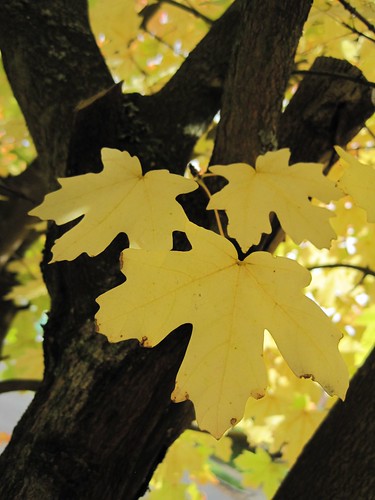The value of city trees to wildlife and people

By Neva Knott
Wildlife fare better in the city when trees provide food and shelter for them. Salmon swim our creeks on the way to the big rivers—Willamette and Columbia; coyotes roam through town; if you live here you are no stranger to the crows, squirrels and raccoons.
The tree canopy keeps river water clean for the fish and helps to moderate water temperature so they can flourish. Fruit and nuts feed many of the 200 species of birds that call this city home. Squirrels live in the leafy high-rises. Travel corridors provide safety for larger creatures hoping to sneak from tree patch to tree patch for under cover. These habitat resources lower incidents of wildlife encroaching on human habitat; in turn the city is safer for all species—humans and those with scales, fur and feathers.

All of these ecosystems services add up to a boon for the city. Homeowners also cash in on street tree value. When you drive down a street under its lush canopy with boughs that reach across to make an arc overhead, know that the shade these trees provide lowers energy use, and increases property value by $14,500 per street tree. Stormwater Management and Clean River Rewards credits on your sewer bill are available for efforts made on the home front. Crime is lower where there are trees. People walk more in tree-dense areas. Overall livability increases when a city’s canopy is dense.
Forests in the United States are being converted for non-forest uses at the rate of one million acres a year, yet humans need trees to live. Oregon is facing serious environmental and economic issues due to shifts in our forest-based economy. Where does the urban forest fit in?
The United States Forest Service suggests that forest managers begin to take a broader view of forests themselves. The agency’s new national themes are: 1) conserve working forest landscapes; 2) protect forests from harm; 3) enhance public benefits from trees and forests. It no longer works to see trees in one of two ways … as measurable in board feet or in preservation. All the forms of community forestry operate on the relationship between sustainable forestry and people who live and work in those forests.

The broader view suggested by the Forest Service (and other agencies and organizations) is to include urban forests. City trees provide opportunities; they provide another way for trees to work for us by shaping new economies and new types of forestry jobs. And tree-planting programs are sprouting up everywhere. What enthuses me about urban forestry and tree-planting programs is the opportunity for individual empowerment. In all the talk about climate change and environmental degradation it is easy to feel helpless.
I have been studying conservation biology for the last two years, during which I’ve come to believe that trees can assuage many of the world’s problems. I volunteer for Friends of Trees and I am hooked. Saturday morning, 7:00 am. It’s early, but I can’t get my rubber boots on fast enough and get out the door—rain, sun, or freezing cold.
I can’t stop global warming, but I can plant a tree.
–This is the last of a series of four stories by Friends of Trees Crew Leader Neva Knott, excerpted on our blog, Growth Rings. To read more, visit Knott’s blog Stand of Trees.
